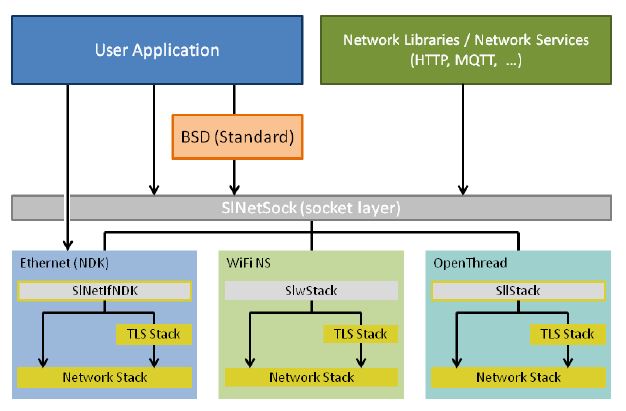SPMA080 April 2021 TM4C1292NCPDT , TM4C1292NCPDT , TM4C1292NCZAD , TM4C1292NCZAD , TM4C1294KCPDT , TM4C1294KCPDT , TM4C1294NCPDT , TM4C1294NCPDT , TM4C1294NCZAD , TM4C1294NCZAD , TM4C1299KCZAD , TM4C1299KCZAD , TM4C1299NCZAD , TM4C1299NCZAD , TM4C129DNCPDT , TM4C129DNCPDT , TM4C129DNCZAD , TM4C129DNCZAD , TM4C129EKCPDT , TM4C129EKCPDT , TM4C129ENCPDT , TM4C129ENCPDT , TM4C129ENCZAD , TM4C129ENCZAD , TM4C129LNCZAD , TM4C129LNCZAD , TM4C129XKCZAD , TM4C129XKCZAD , TM4C129XNCZAD , TM4C129XNCZAD
- Trademarks
- 1 Introduction
- 2 Application Examples
- 3 Application Setup
- 4 Download and Import the Ethernet Examples
- 5 How to Create an Ethernet Application for TI-RTOS NDK
- 6 Enet_tcpecho_server_tirtos Example Overview
- 7 Enet_udpecho_server_tirtos Example Overview
- 8 Enet_httpServer_tirtos Example Overview
- 9 Enet_dns_tirtos Example Overview
- 10Enet_sntp_tirtos Example Overview
- 11Enet_tcpecho_client_tirtos Example Overview
- 12Enet_udpecho_client_tirtos Example Overview
- 13Enet_httpget_tirtos Example Overview
- 14References
1 Introduction
The Network Developer’s Kit (NDK) is a platform for development and demonstration of network enabled applications on TI embedded processors. The code included in the NDK is generic C code which runs on a variety of TI devices.
 Figure 1-1 Components of a NDK-Enabled
Application
Figure 1-1 Components of a NDK-Enabled
ApplicationIn Figure 1-1, the user application can make calls using the standard BSD sockets APIs, or it can directly call into the SINetSock layer to communicate with a network connection. The SINetSock layer is a stack-independent layer between the user application and the service-specific stacks.
The NDK is designed to provide a platform-independent, device-independent, and RTOS-independent API interface for use by the application.
NDK is a networking component of TI-RTOS - a scalable embedded tools ecosystem for TI devices. TI-RTOS scales from a real-time multitasking kernel (SYS/BIOS) to a complete RTOS solution with middleware components and device drivers.
The main focus of this application report is to illustrate the various Ethernet applications for TI-RTOS NDK. This application report assumes the user has some basic understanding about TI-RTOS and NDK. If you are new to TI-RTOS and NDK, refer to the below documents for details: